 W
WAn abandoned railroad is a railway line which is no longer used for that purpose. Such lines may be disused railways, closed railways, former railway lines, even derelict railway lines. Some have had all their track and sleepers removed, and others have material remaining from the former use.
 W
WThe Aigues-Vives tramway was a 2 km (1.2 mi) long narrow-gauge railway with a gauge of 600 mm in Aigues-Vives in the department Gard in Southern France. It operated from 1892 to 1901.
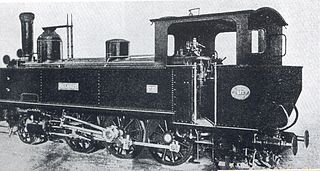 W
WAthens–Lavrion Railway was a 1,000 mm metre gauge railway line connecting downtown Athens with Eastern Attica and the mining town of Lavrion in Greece.
 W
WThe Chambéry tramway was from 1892 to 1932 an up to 31 km (19 mi) long narrow-gauge steam tram network with 33 halts on four lines in Chambéry in Savoy in France.
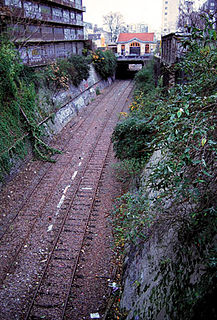 W
WParis' former Chemin de fer de Petite Ceinture, also colloquially known as La Petite Ceinture, was a circular railway built as a means to supply the city's fortification walls, and as a means of transporting merchandise and passengers between Paris' major rail-company stations. Beginning as two distinct 'Ceinture Syndicate' freight and 'Paris-Auteuil' passenger lines from 1851, these lines formed an arc that surrounded the northern two thirds of Paris, an arc that would become a full circle of rail around the capital when its third Ceinture Rive Gauche section was built in 1867.
 W
WThe Coffs Harbour Timber Company (CHT) operated two sawmills and two logging railways with a gauge of 3 ft 6 in south of Coffs Harbour in the Australian state New South Wales.
 W
WThe Decauville Tramway at Exposition Universelle in Gent, 1913 was a temporary narrow gauge railroad with a gauge of 600 mm, which was operated during the World Fair held in Ghent from 26 April to 3 November 1913.
 W
WThe Delaware, Maryland, and Virginia Railroad is a defunct American railroad that operated passenger service from Broad Street Station in Philadelphia, Pennsylvania to Franklin City, Virginia. At the latter city, steamship connections could be made to Chincoteague, Virginia on the Atlantic Ocean-side exterior islands. The railroad was formed in 1883 through a consolidation of the Junction and Breakwater Railroad and the Breakwater and Frankford Railroad. The Philadelphia, Wilmington and Baltimore Railroad took control in March 1891 after the Delaware, Maryland, and Virginia Railroad approached default on two mortgages totaling $600,000. The Delaware General Assembly met with Delaware, Maryland, and Virginia Railroad directors and those of the Philadelphia, Wilmington, and Baltimore Railroad in order to avoid the default and keep the rail lines open. The Delaware, Maryland, and Virginia Railroad shareholders remained minority owners of the line until 1919, when they were unable to meet financial obligations, and the minority shares were sold to the Pennsylvania Railroad.
 W
WThe Fawdon Wagonway was from 1818 to 1826 a 1 mile 3 furlongs (2.2 km) long horse-drawn and partially rope-operated industrial railway in Fawdon near Newcastle upon Tyne. It was the first cable car employing a moving rope that could be picked up or released by a grip on the cars.
 W
WThe Geldersch-Overijsselsche Lokaalspoorweg-Maatschappij (GOLS) was a railway company that owned and serviced several railways in the Dutch provinces of Gelderland and Overijssel. The company was founded by Jan Willink, a textile producer from Winterswijk, who had created the Borken - Winterswijk - Zutphen railway in 1878.
 W
WThe Hollandsche IJzeren Spoorweg-Maatschappij [ˈhɔlɑntsə ˈɛizərə(n) ˈspʊːrʋɛxmaːtsxɑˌpɛi] or HSM was the first railway company in the Netherlands founded on 8 August 1837 as a private company, starting operation in 1839 with a line between Amsterdam and Haarlem. The company remained operational until 1938, when it merged with the Maatschappij tot Exploitatie van Staatsspoorwegen (SS) to form the Nederlandse Spoorwegen (NS).
 W
WThe Kars–Gyumri–Tbilisi railway line is a railway line that runs from the city of Kars in Turkey to the Armenian city of Gyumri, and from there on to Tbilisi, Georgia.
 W
WThe Kiso Forest Railway was a network of 400 km of 762 mm narrow gauge light railway lines that operated in the Kiso Valley in Nagano Prefecture, Japan.
 W
WThe Kŭmgangsan Electric Railway, later known as the Kŭmgangsan Line, was a railway line that formerly ran between Ch'ŏrwŏn to Naegŭmgang, on the inner side of Mount Kŭmgang. At Ch'ŏrwŏn, the line connected to the Kyŏngwŏn Line of the Chosen Government Railway (Sentetsu) the Kyŏngwŏn Line was split between Korail's Gyeongwon Line in South Korea and the Kangwŏn Line of the Korean State Railway.
 W
WThe Langley Vale Timber Tramway was a 20-kilometre (12 mi)-long narrow gauge railway network with mainly wooden rails with a gauge of 4 ft 2 in. It was used from 1897 to 1933 for transporting logs to a sawmill at Lansdowne in the Manning River Valley, north of Taree, New South Wales.
 W
WThe Lewiston & Youngstown Frontier Electric Railway connected the villages of Lewiston and Youngstown in Niagara County, New York.
 W
WThe Logan Square branch was a rapid transit branch which is part of the Chicago 'L' system. It opened on May 6, 1895 and closed south of Damen station on February 25, 1951, when it was partially replaced by the Milwaukee-Dearborn Subway. The remainder of the branch is currently a part of the O'Hare branch of the Blue Line.
 W
WThe Maatschappij tot Exploitatie van Staatsspoorwegen or SS was a private railroad founded to use the government funded railways. The company existed until 1938, when it formally merged with the Hollandsche IJzeren Spoorweg-Maatschappij (HSM) to form the Nederlandse Spoorwegen. The SS was, along with the HSM, the largest railroad company in the Netherlands.
 W
WThe Malta Railway was the only railway line ever on the island of Malta, and it consisted of a single railway line from Valletta to Mdina. It was a single-track line in metre gauge, operating from 1883 to 1931. The railway was known locally in Maltese as il-vapur tal-art.
 W
WThe Marconi Railway was a 1 1⁄2 miles (2.4 km) long narrow gauge railway with a gauge of 2 feet (610 mm) at the Marconi Wireless Station near Clifden in the Irish County Galway.
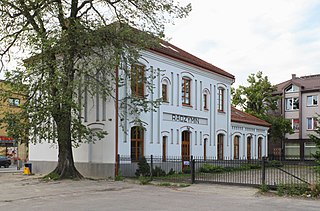 W
WMarecka Kolej Dojazdowa was a narrow gauge railway in Poland connecting Warsaw with Marki and Radzymin active from 1896 to 1974.
 W
WThe Menaggio–Porlezza railway was a railway in the Italian province of Como. The line connected the town of Menaggio, on Lake Como, with Porlezza, on Lake Lugano, and was built as part of a multi-modal transport link between Menaggio and Luino, on Lake Maggiore.
 W
WMödling and Hinterbrühl Tram or Mödling and Hinterbrühl Local Railway was an electric tramway in Austria, running 4.5 km (2.8 mi) from Mödling to Hinterbrühl, in the southwest of Vienna. The gauge was 1,000 mm metre gauge. Opened in October 1883, it was the first tram and railway in the world that was run with electricity delivered by an overhead line in permanent service. It was the first electric tram and railway in Austria, and it was the second one installed for definitive service. The operation ceased in March 1932.
 W
WThe Muar State Railway (MSR) (Malay: Keretapi Kerajaan Muar ; Jawi: كريتاڤي كراجأن موار) was a railroad operating in the district of Muar in Johor, Malaya. Significantly, the MSR was the second railway line to operate in Johor after the short-lived Johore Wooden Railway (JWR), and began operation in 1890, five years after the opening of Perak Railway's Taiping-Port Weld line. In comparison to the JWR, the MSR was more successful commercially, operating for 39 years before facing closure under stiff competition coupled with rising operation costs.
 W
WThe Nepal Government Railway (NGR) was Nepal's first railway in Nepal. Established in 1927 and closed in 1965, it linked Amlekhganj with Raxaul across the border in India in the south. The 2 ft 6 in narrow gauge railway was 47 km long.
 W
WThe Ocean Island Railway was a 3 kilometres (2 mi) long guano mining railway with a gauge of initially 2 ft, and after 1937 of 3 ft and finally 1,435 mm on Ocean Island.
 W
WThe Ocean Pier Railway at Atlantic City was an electric narrow gauge railway, which ran over the entire length of the Ocean Pier in Atlantic City, about 1,900 feet (580 m) into the ocean.
 W
WThe Parenzana in Italian and Croatian or Porečanka in Slovene is one of the nicknames of a defunct narrow-gauge railway between Trieste and Poreč, in present-day Italy, Slovenia and Croatia.
 W
WThe Peekskill Valley Railroad was a 7 miles (11.3 km) long narrow gauge railroad in Peekskill, New York. It was inaugurated in 1873.
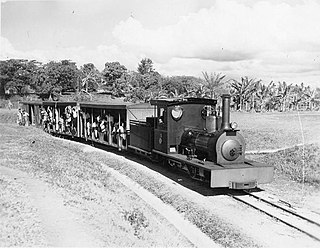 W
WThe Rarawai–Kavanagasau Light Railway was a 142 miles (229 km) long narrow gauge railway on Fiji.
 W
WThe Santon Downham Tramway or Downham Hall Timber Railway was a 6 kilometres (3.7 mi) long forest railway with a gauge of 3 ft in Santon Downham near Thetford in England, which was operated around 1918 to 1922.
 W
WThe Seaton Burn Wagonway was from 1826 to 1920 a partially horse-drawn and partially rope-operated industrial railway with a gauge of 4 ft 6 in near Newcastle upon Tyne.
 W
WThe Sha Tau Kok Railway was a 2 ft narrow gauge railway operated by the Kowloon-Canton Railway Corporation, running from Fanling to Sha Tau Kok in the northern New Territories of Hong Kong. It was 11.67 kilometers long and had 8 services a day. The time it took to travel from Fanling to Sha Tau Kok was 55 minutes.
 W
WThe Skewen Dram Road was a 3 miles (5 km) long mining railway near Skewen in Wales with a gauge of 2 feet 7 1⁄2 inches (800 mm).
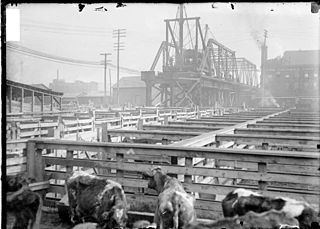 W
WThe Stock Yards branch was a rapid transit line which was part of the Chicago 'L' system from 1908 to 1957. The branch served the Union Stock Yards and the Canaryville neighborhood of Chicago and consisted of eight elevated stations. It opened on April 8, 1908, and closed on October 6, 1957.
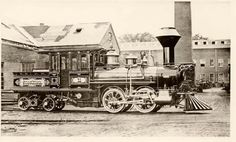 W
WThe Stockton & Ione Railroad was from 1873 to 1876 a 40 miles (64.4 km) long narrow gauge railroad in California.
 W
WThe Sun Ning Railway Company, also known as the Sunning Railway Co. or the Xinning Railway Co., was a standard-gauge railway in the Pearl River Delta in Guangdong Province founded in 1906 by Chin Gee Hee and Yu Shek. It was South China's second railway and one of only three railways in pre-1949 China built solely with private Chinese capital. It was destroyed during the Second World War to prevent its use by the Japanese.
 W
WThe Taisha Line was a railway line of West Japan Railway Company within Izumo, Shimane, Japan. The line closed on April 1, 1990.
 W
WThe Tempoku Line was a railway line most recently operated by Hokkaido Railway Company in Hokkaidō, Japan. The 148.9 kilometres line connected from Otoineppu to Minami-Wakkanai via Nakatonbetsu, Hamatonbetsu and Sarufutsu until its closure in 1989. This railway line was named after Teshio Province and Kitami Province.
 W
WThe Avdiivka tram opened August 23, 1965. Due to the ongoing War in Donbass the transport system has not operated since 2015 despite attempts to restart operations.
 W
WThere have been two separate generations of trams in Rouen. The first generation tramway was a tram network built in Rouen, Normandy, northern France, that started service in 1877, and finally closed in 1953. There were no trams at all in Rouen between 1953 and 1994, when the modern Rouen tramway opened.
 W
WThe Vennbahn is a former railway line that was built partly across what was then German territory by the Prussian state railways. It is now entirely in Belgium, because the trackbed of the line, as well as the stations and other installations, were made provisional Belgian territory in 1919 under an article of the Treaty of Versailles.